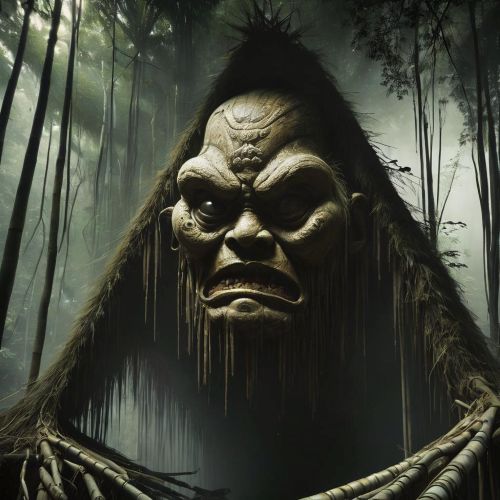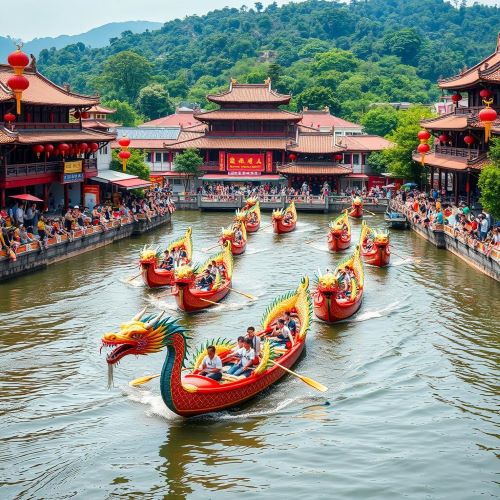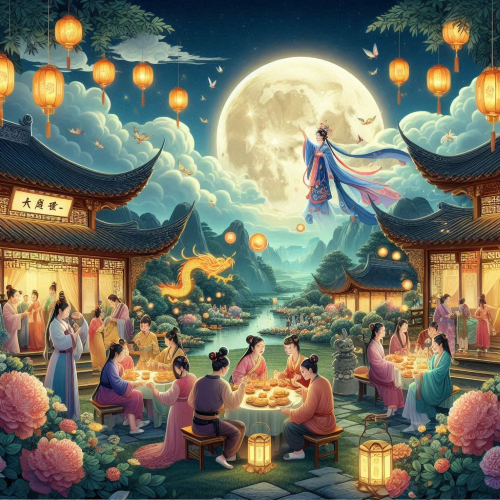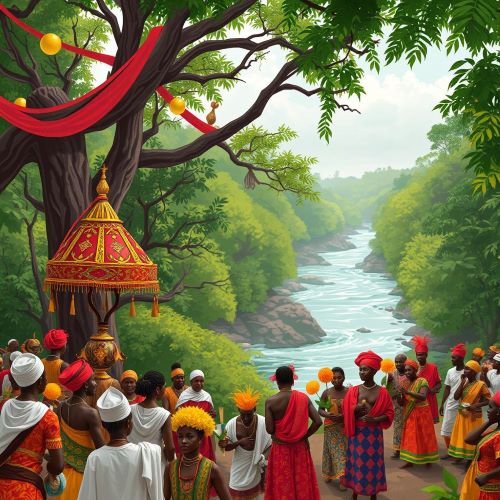Yuan Xiao : The Lantern Festival
At a glance
| Description | |
|---|---|
| Location | Beijing, Shanghai, Pingxi, Nanjing |
| Country | China |
| Dedicated To | Spring |
| Duration | 1 day |
| Time of Year | February – March |
Introduction
The Lantern Festival, or Yuan Xiao Festival, is a beloved event in Chinese culture, celebrated on the 15th day of the first lunar month. It signifies the conclusion of the Chinese New Year celebrations. This vibrant festival is famous for its dazzling lantern displays, engaging activities, and strong ties to Chinese mythology. Families come together each year to light up the night with lanterns and enjoy traditions that showcase their cultural heritage. Beyond the festivities, the Lantern Festival holds deep mythological significance, blending folklore with contemporary customs.
Connection with Mythology
The Lantern Festival is rich in mythology, with several legends explaining its origins. One popular tale centers on the Jade Emperor, the highest deity in Taoism. According to the legend, a celestial dragon attacked the heavens, threatening the Jade Emperor’s palace. To protect themselves, the people lit lanterns to create the illusion of fire and smoke, scaring the dragon away.
Another well-known myth involves the moon goddess, Chang’e. After drinking a potion that granted her immortality, she ascended to the moon, leaving her husband, Hou Yi, behind. In her honor, people celebrate the festival by displaying lanterns and releasing them into the sky, symbolizing the hope of reunion with loved ones. The moon plays a central role in the festival, reinforcing the themes of togetherness and reunion.
A different myth explains the festival through the story of Yuan Xiao, a maid in the Han Dynasty. Longing to be with her family, she sought the help of the official Dongfang Shuo, who invented a story about the God of Fire planning to burn the city. The emperor, believing the city would be saved by lighting lanterns, ordered the citizens to hang red lanterns all night. This created the illusion of a city ablaze, allowing Yuan Xiao to reunite with her family.
Another version ties the festival to the Jade Emperor’s anger toward a town that had killed his crane. To punish the town, the emperor planned to set it on fire. However, his daughter warned the townspeople, who lit lanterns, set off fireworks, and made noise to trick the emperor into thinking the town had already been destroyed.
These myths reflect themes of cleverness, resilience, and community, deeply embedding the Lantern Festival in Chinese culture and highlighting its historical significance.
Main Activities
The Lantern Festival offers a wide array of activities that engage people of all ages. One of the main highlights is the lantern display, where stunning, intricately designed lanterns light up the night in a burst of color. These lanterns, often shaped like animals, mythical creatures, or historical figures, are scattered across parks, streets, and homes, creating a magical atmosphere for all who walk among them.
A staple of the festival is the traditional dragon and lion dances. Performed to bring good fortune, these vibrant dances feature performers dressed in elaborate costumes who mimic the movements of these powerful creatures. The rhythmic beats of drums and cymbals add to the energy, and these dances are believed to drive away evil spirits while blessing the community with prosperity.
Another beloved tradition is enjoying tangyuan, or glutinous rice balls. These sweet treats, typically filled with sesame paste, red bean paste, or peanuts, are round in shape, symbolizing unity and completeness. Their consumption brings families together, reinforcing the festival’s focus on family bonds and happiness.
The Lantern Festival also incorporates a fun intellectual challenge through lantern riddles, or “dengmi.” Riddles are written on lanterns, and participants try to solve them to win small prizes. This tradition adds an element of entertainment and mystery to the festival, encouraging both participation and community interaction.
Together, these activities—lantern displays, traditional dances, delicious foods, and mental challenges—create an immersive and joyous experience that celebrates both culture and togetherness.
Importance in Cultural History
The Lantern Festival has deep roots in Chinese history, dating back to the Western Han Dynasty (206 BCE – 25 CE), where it began as a day dedicated to worshiping deities and honoring ancestors. Over the centuries, the festival gradually absorbed agricultural rituals and religious practices, reflecting the adaptability of Chinese culture. This evolution showcases the ability of traditional customs to evolve while remaining integral to Chinese identity.
As the Lantern Festival progressed, it became a celebration of the arrival of spring. It offers a chance for people to welcome the new season, share their hopes for the future, and honor the rhythms of nature. Symbolizing renewal and optimism, the festival has become an essential aspect of Chinese culture, reinforcing community bonds, local pride, and a collective sense of heritage.
The festival also represents the pursuit of harmony and unity, coinciding with the first full moon of the lunar year. This event symbolizes the return of light and the renewal of hope. Its focus on family reunions and collective celebrations emphasizes its role in strengthening social connections and cultural continuity.
Historically, the Lantern Festival has been shaped by the influences of various dynasties. During the Tang Dynasty (618–907 CE), the festival grew in popularity, with elaborate lantern displays and public festivities. The Song Dynasty (960–1279 CE) further contributed to its widespread recognition, and each subsequent dynasty has continued to build upon these traditions, ensuring the festival’s enduring presence in Chinese culture.
The Lantern Festival also serves to preserve Chinese customs and folklore, keeping ancient myths and legends alive. By passing down these stories, the festival plays a vital role in sustaining cultural heritage across generations.
Need a place to stay? Book your hotel room now!
International Appeal
In recent years, the Lantern Festival has garnered global attention, with celebrations extending beyond China to many countries around the world. Major cities like New York, Sydney, and London, as well as smaller communities with sizable Chinese populations, now host festivals that feature stunning lantern displays and traditional cultural performances. These celebrations not only showcase the visual beauty of the lanterns but also offer a glimpse into Chinese traditions, fostering cultural exchange and promoting mutual appreciation.
As the festival spreads internationally, it adapts to different cultural contexts while retaining its core elements. Countries like Malaysia and Singapore, where large Chinese communities reside, celebrate the event with unique local customs, blending traditional practices with regional influences. This adaptability keeps the Lantern Festival relevant, especially among younger generations, ensuring that cultural heritage continues to thrive.
The festival’s growing global appeal has also sparked greater interest in Chinese culture, allowing people from diverse backgrounds to connect with the stories and symbolic meanings behind the lanterns. Through performances like lion dances and folk music, attendees experience not only the beauty of the celebration but also its deeper cultural significance, creating an enriching experience for all.
Moreover, the Lantern Festival’s impact extends into art and tourism. Its vibrant colors and intricate designs have inspired countless artists, photographers, and filmmakers. The festival has become a major tourist draw, with visitors flocking to events in search of the enchanting atmosphere and cultural richness it offers.
Ultimately, the Lantern Festival serves as a reminder of unity, hope, and renewal, bringing people together to celebrate age-old traditions while embracing the future. It continues to transcend cultural boundaries, allowing people worldwide to enjoy and appreciate the beauty and meaning behind this timeless celebration.
Source
Eberhard, Wolfram. A Dictionary of Chinese Symbols: Hidden Symbols in Chinese Life and Thought. Routledge, 2006.
Knechtges, David R. Wen Xuan or Selections of Refined Literature, Volume III Republic of China (1996)
Yip, Ming-Mei. Chinese Festivals: Traditions and Customs. Watermark Publishing, 1993.
China Culture:
The World of Chinese:
Frequently Asked Questions
Lorem ipsum dolor sit amet, consectetur adipiscing?
Lorem ipsum dolor sit amet, consectetur adipiscing elit. Praesent convallis vestibulum justo, ac tincidunt nunc vehicula quis. Nullam id dolor quis orci malesuada feugiat. Curabitur aliquet libero at urna ullamcorper, ac ultricies nulla dapibus.
Lorem ipsum dolor sit amet, consectetur adipiscing?
Lorem ipsum dolor sit amet, consectetur adipiscing elit. Praesent convallis vestibulum justo, ac tincidunt nunc vehicula quis. Nullam id dolor quis orci malesuada feugiat. Curabitur aliquet libero at urna ullamcorper, ac ultricies nulla dapibus.
Lorem ipsum dolor sit amet, consectetur adipiscing?
Lorem ipsum dolor sit amet, consectetur adipiscing elit. Praesent convallis vestibulum justo, ac tincidunt nunc vehicula quis. Nullam id dolor quis orci malesuada feugiat. Curabitur aliquet libero at urna ullamcorper, ac ultricies nulla dapibus.
Lorem ipsum dolor sit amet, consectetur adipiscing?
Lorem ipsum dolor sit amet, consectetur adipiscing elit. Praesent convallis vestibulum justo, ac tincidunt nunc vehicula quis. Nullam id dolor quis orci malesuada feugiat. Curabitur aliquet libero at urna ullamcorper, ac ultricies nulla dapibus.
Lorem ipsum dolor sit amet, consectetur adipiscing?
Lorem ipsum dolor sit amet, consectetur adipiscing elit. Praesent convallis vestibulum justo, ac tincidunt nunc vehicula quis. Nullam id dolor quis orci malesuada feugiat. Curabitur aliquet libero at urna ullamcorper, ac ultricies nulla dapibus.








